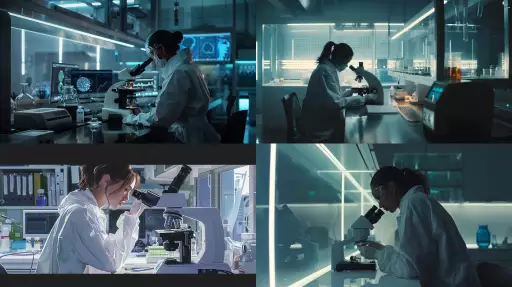Explore the Best AI Image Gallery

Pixels on Skin: How AI is Transforming Product Photography
The world of product photography has always been about capturing the essence of a product, highlighting its features, and enticing potential buyers. But with the rise of artificial intelligence (AI), this landscape is undergoing a seismic shift.
From generating realistic product images to streamlining workflows, AI is empowering creatives and businesses alike. This blog post delves into the fascinating world of AI in product photography, exploring its transformative impact, diverse applications, ethical considerations, and the exciting trends shaping its future.
The AI Advantage: Redefining Product Photography
AI-powered tools are redefining the very core of product photography by automating tasks, enhancing visuals, and opening up new creative possibilities. Some key advantages include:
- Automated Image Generation: AI algorithms can generate realistic product images from scratch, eliminating the need for physical photography in certain scenarios.
- Customization at Scale: Businesses can easily create variations of product images with different colors, styles, or backgrounds using AI-powered tools. This allows for personalized marketing campaigns and efficient catalog management.
- Enhanced Visual Quality: AI algorithms can enhance existing product images by improving lighting, sharpness, and color accuracy, resulting in visually appealing and professional-looking visuals.
- 3D Product Visualization: AI enables the creation of interactive 3D models of products, allowing customers to explore them from multiple angles and gain a deeper understanding of their features and design.
Applications Across Industries
The impact of AI in product photography extends across diverse industries:
- E-commerce: AI-powered tools help e-commerce businesses create compelling product listings, reduce the time required for image editing, and personalize customer experiences.
- Fashion & Apparel: Designers can leverage AI to generate virtual fashion shows, showcase different outfit combinations, and create personalized style recommendations.
- Real Estate: Virtual tours powered by AI can showcase properties in a realistic and immersive way, allowing potential buyers to explore them remotely.
- Manufacturing: AI can be used to create high-quality product documentation and technical illustrations, streamlining communication and reducing production errors.
Ethical Considerations: Navigating the AI Landscape
While AI offers tremendous opportunities, its crucial to address the ethical considerations associated with its use in product photography:
- Bias in Algorithms: AI algorithms can perpetuate existing biases if they are trained on biased datasets. It is essential to ensure that training data is diverse and representative.
- Transparency and Explainability: The decision-making processes of AI algorithms can be complex and opaque. Strive for transparency by explaining how AI tools are used and their potential impact on product representations.
- Authenticity and Trust: Consumers should be aware when they are interacting with AI-generated content. Maintain ethical practices by clearly labeling AI-created images and avoiding deceptive use of AI technology.
The Future of AI in Product Photography
The future of product photography is undeniably intertwined with the evolution of AI. Here are some key trends to watch:
- Hyper-Personalization: AI will enable even more personalized product experiences, tailoring images and visualizations based on individual customer preferences.
- Immersive Experiences: Augmented reality (AR) and virtual reality (VR) will be integrated with AI to create immersive product showcases that allow customers to interact with products in virtual environments.
- AI-Powered Creativity: AI tools will empower photographers and designers to explore new creative possibilities, pushing the boundaries of what is achievable in product photography.
As AI technology continues to advance, its impact on product photography will only become more profound. By embracing ethical practices, fostering transparency, and harnessing the power of creativity, we can unlock the full potential of AI to revolutionize how products are presented and experienced.



](https://images.ai-img.art/thumbnails/150/4289d1230b86a96c4d556636c3167bed0ef38f850826549517e4e45db4d87bf7.webp)






](https://images.ai-img.art/thumbnails/150/008b5d5d49667cc2e93a5f8a8adfaa545963da99c39ff0901f5296294636400d.webp)












](https://images.ai-img.art/thumbnails/150/bddf3ae4a232290858389b933c866ad3be429ef2e25c23a9f4d7713ed6e44d0b.webp)




](https://images.ai-img.art/thumbnails/150/f67d9af3398150f2ab1bcf250717fea134275e2ca896252b54a4d9bb3719f9ac.webp)
](https://images.ai-img.art/thumbnails/150/f9584153b4cddd8c9fab611dc10247549b275c59bc173251e37d0935874f9deb.webp)


](https://images.ai-img.art/thumbnails/150/c2c9c48b38fae37f0a457b80b084ed01ba803810fc8f488c8f610c03abc74049.webp)








